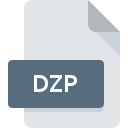.DZP File Extension

DirectorZone Particle Effect File
| Developer | CyberLink |
| Popularity | |
| Category | Video Files |
| Format | .DZP |
| Cross Platform | Update Soon |
What is an DZP file?
The .DZP file extension denotes a specific type of file used by DirectorZone, a platform associated with various multimedia applications and software. More specifically, .DZP files are known as DirectorZone Particle Effect files.
These files are used to define and store particle effects, which are visual effects often utilized in multimedia and graphical applications, such as animations and video games.
The use of particle effects helps in creating dynamic and visually engaging elements like fire, smoke, rain, and other effects that require numerous small particles to simulate real-world phenomena.
More Information.
The initial purpose of .DZP files was to enhance the capabilities of CyberLink’s multimedia software by allowing users to add complex particle effects to their projects.
Before the advent of DirectorZone and .DZP files, users had limited options for incorporating particle effects, often relying on pre-set effects or creating their own from scratch.
The introduction of .DZP files aimed to simplify this process by providing a standardized format for storing and sharing particle effects.
Over time, the use of .DZP files has expanded as the DirectorZone platform has grown, and they have become a key component in the multimedia creation process for many users.
Origin Of This File.
The .DZP file extension is associated with DirectorZone, a website and software platform developed by CyberLink.
DirectorZone is part of CyberLink’s suite of multimedia software products, which includes applications for video editing, animation, and other creative tasks.
The platform provides users with a repository of creative assets, including particle effects, which can be downloaded and used in various CyberLink applications.
The .DZP files were introduced as a way to standardize and manage these particle effects, making it easier for users to incorporate them into their projects.
File Structure Technical Specification.
A .DZP file is essentially a container for particle effect data. It stores various attributes and parameters required to render a particle effect within CyberLink software. The file structure of a .DZP file typically includes the following components:
- Particle System Configuration: This section contains information about the particle system, such as the number of particles, their size, and their behavior. It defines how particles are generated, moved, and rendered.
- Texture and Image Data: Particle effects often use textures or images to represent particles. The .DZP file includes references to these textures, which are used to visually represent each particle.
- Animation Data: If the particle effect involves animation, the .DZP file contains data related to the animation frames, timing, and transitions.
- Behavior Parameters: This includes settings for how particles interact with each other and with the environment, such as gravity, wind, and collision effects.
The technical specifications of .DZP files are optimized for compatibility with CyberLink’s software, ensuring that particle effects are rendered accurately and efficiently.
The file format is proprietary, meaning that while .DZP files are designed to be used with CyberLink applications, their structure and content are not openly documented outside of CyberLink’s ecosystem.
How to Convert the File?
Converting .DZP files to other formats can be challenging due to their proprietary nature. There are a few approaches you might consider:
- CyberLink Software Export: Some CyberLink applications may offer options to export or convert .DZP files into other formats that can be used outside of DirectorZone. Check the software’s documentation or settings to see if this feature is available.
- Third-Party Tools: Although there are no widely recognized third-party tools specifically for converting .DZP files, general file conversion software may support some conversion if the .DZP file is compatible with other formats. Be cautious when using third-party tools, as they may not always support proprietary formats.
- Manual Recreation: If conversion is not possible, consider manually recreating the particle effects in other software that supports particle effects. This involves replicating the effect settings and attributes from the .DZP file.
Advantages And Disadvantages.
Advantages:
- Standardization: The .DZP file format provides a standardized way to store and share particle effects, making it easier for users to incorporate complex effects into their projects.
- Ease of Use: By using .DZP files, users can easily import pre-designed particle effects into CyberLink software, saving time and effort compared to creating effects from scratch.
- Compatibility: .DZP files are designed to work seamlessly with CyberLink applications, ensuring that particle effects are rendered correctly and consistently.
Disadvantages:
- Proprietary Format: The .DZP file format is proprietary to CyberLink, which means it is not widely supported outside of CyberLink’s ecosystem. This limits the ability to use .DZP files with other multimedia applications.
- Limited Flexibility: While .DZP files provide a standardized way to manage particle effects, they may not offer the same level of flexibility as custom-built effects or other file formats that are more open and widely supported.
- Dependency on DirectorZone: To fully utilize .DZP files, users need access to the DirectorZone platform and compatible CyberLink software, which may not be available to all users.
How to Open DZP?
Open In Windows
- CyberLink Software: The primary way to open .DZP files on Windows is through CyberLink applications such as PowerDirector or other compatible software. Simply open the application, go to the DirectorZone section, and import the .DZP file.
Open In Linux
- Limited Support: Linux users may face difficulties opening .DZP files due to limited support for CyberLink software. Using a Windows emulator or virtual machine may be necessary to access these files.
Open In MAC
- Compatibility Issues: CyberLink’s software is primarily designed for Windows, so opening .DZP files on macOS may be challenging. Consider using virtualization software or Boot Camp to run Windows applications on your Mac.












